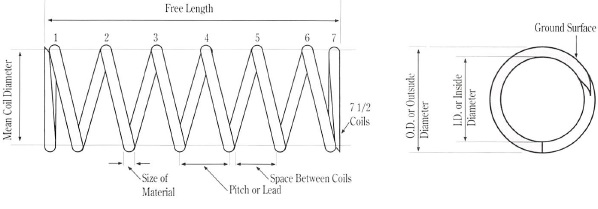Get unique, complex parts easily. No matter your requirements, Chaoyi Spring creates hard-to-produce coil springs and wire forms.
Let us help you create the custom wire form you need, from S-hooks and J-hooks to utility hooks and more.
We work closely with customers across a wide range of industries, helping them design and manufacture made-to-order parts.
Why choose Chaoyi Spring? We prioritize customer-focused collaboration, modern equipment and the latest technology to make your parts per print.
Find the information and guidance you need, from measuring a spring to learning about materials, placing an order and much more.
Compression springs, those seemingly simple coils of metal, play a vital role in countless aspects of our daily lives. From the smooth operation of our car suspension to the satisfying


Compression springs, those seemingly simple coils of metal, play a vital role in countless aspects of our daily lives. From the smooth operation of our car suspension to the satisfying click of a pen, these unassuming components are the unsung heroes of countless mechanical systems. In this article, we'll delve into the fascinating world of compression springs, exploring their design, types, applications, and the science that makes them tick.

At their core, compression springs are designed to absorb and store energy when compressed, releasing it to return to their original shape. They are typically made from high-strength materials like spring steel, which can withstand repeated compression cycles without fatigue. This ability to absorb and release energy is what makes them indispensable in so many applications.
The behavior of a compression spring is governed by Hooke's Law, a fundamental principle of physics. This law states that the force exerted by a spring is directly proportional to its displacement from its resting position. In simpler terms, the more you compress a spring, the greater the force it will exert to return to its original shape. The constant of proportionality in Hooke's Law is known as the spring rate, which represents the stiffness of the spring.
Compression springs come in a wide variety of designs, each tailored for specific applications. Some common types include:
The versatility of compression springs makes them essential components in a wide range of industries and applications, including:
Selecting the right compression spring for a specific application requires careful consideration of several factors, including:
As technology continues to advance, the demand for springs with higher performance and more specialized capabilities is increasing. Researchers are constantly exploring new materials and designs to create springs that are lighter, stronger, and more durable. The use of composite materials, advanced manufacturing techniques, and smart materials is opening up new possibilities in spring design.
Compression springs may be small, but they are essential components in countless machines and devices that shape our world. From the intricate mechanisms of our cars to the simple act of writing a note, these unassuming coils of metal play a crucial role in the smooth functioning of our lives. Understanding the science behind these versatile components allows us to appreciate the silent power that they wield.
In conclusion, compression springs are a testament to the ingenuity of engineering and the power of simple principles. Their ability to absorb and release energy makes them indispensable in a wide range of applications, from the complex machinery of modern industry to the everyday objects we take for granted. As we continue to explore new materials and designs, the future of compression springs promises even greater innovation and even wider-ranging applications.
Browse some of the custom wire forms and springs that we manufacture. Don’t see what you need? We specialize in made-to-order products that meet your application requirements.
Visit Our GalleryNeed a custom wire form or coil spring? We make it work. Fill out the contact form and a representative will respond within 1 business day. If you have a PDF or CAD file, you can submit to request a quote.